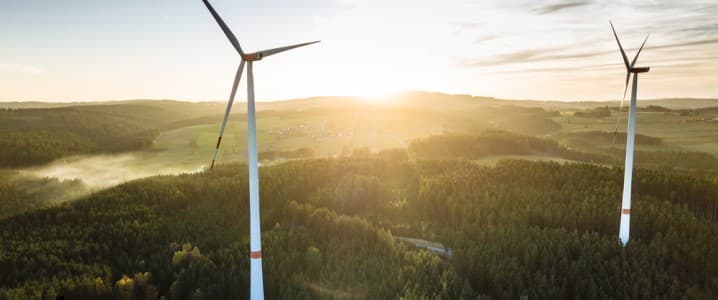The energy transition is in full swing, with the energy transition driving the next commodity supercycle. This portends immense prospects for metals producers, technology manufacturers, and energy traders and investors. Indeed, new energy research provider BloombergNEF estimates that the global transition will require ~$173 trillion in energy supply and infrastructure investment over the next three decades, with renewable energy expected to provide 85% of our energy needs by 2050.
For instance, BNEF projects that by 2030, consumption of lithium and nickel by the battery sector will be at least 5x current levels. Meanwhile, demand for cobalt, used in many battery types, will jump by about 70%. Diverse EV and battery commodities such as copper, manganese, iron, phosphorus, and graphite--all of which are needed in clean energy technologies and are required to expand electricity grids--will see sharp spikes in demand.
But therein lies a big problem: Rising prices of the commodities needed for renewable energy are increasing the costs of setting up new green power projects, which could dramatically slow down the pace of the transition.
Vaibhav Chaturvedi, fellow at the Council on Energy, Environment and Water (CEEW), has conceded that "greenflation", or the costs associated with going green, has become a serious concern: "Underlying commodity prices are rising everywhere in the world," he has said.
Rising costs
This trend is problematic for one big reason: Falling costs have been a major driving force of the clean energy boom.
Over the past decade, the price of solar electricity dropped 89%, while the price of onshore wind dropped 70%.
Meanwhile, rapidly falling EV battery prices have played a big role in helping electric vehicles become more mainstream. As per Bloomberg, over the past decade, EV battery prices have fallen from almost $1,200 per kilowatt-hour to just $137/kWh in 2020. For an EV with a 50 kWh battery pack, that adds up to savings of more than $43,000 in real terms.
Related: The Electric Vehicle Charging Market Could Be Worth As Much As $1.6 Trillion
Overall, clean energy has actually reached an economic tipping point: A 2019 report from the nonprofit Rocky Mountain Institute found that it was cheaper to build and use a combination of renewables like wind and solar than to build new natural gas plants. Another 2020 report from Carbon Tracker found that in every single one of the world's energy markets, it's cheaper to invest in renewables than in coal.
But this remarkable trend has now gone into reverse gear, with prices of metals such as tin, aluminum, copper, nickel, and cobalt, which are essential to energy transition technologies, climbing between 20% and 90% this year, thanks to massive global supply chain disruptions.
Big Leverage
However, the experts are saying that rising green energy costs are only a short-term problem that will be counteracted by another friendlier trend: Falling costs of funding.
According to Chaturvedi, declining costs of funding for renewable projects will act as a "big leverage" that will counter the increase in underlying costs–and he is not alone.
Gauri Singh, deputy director-general at the International Renewable Energy Agency (IRENA), has argued that despite ongoing inflation and supply chain disruptions, decreasing financing costs helped generate a record 260 gigawatts of energy from renewable sources in 2020.
"You will not actually get cheap money for anything that's a climate risk. Whereas for renewables, the market is softening," Singh has declared.
These experts seem to be supported by solid research: Allied Market Research has projected that the global renewable energy market will grow from $881 billion (€781 billion) in 2020 to nearly $2 trillion (€1.8 trillion) by 2030.
And, metals have been tipped to become the oil of the future.
Clean energy technologies require more metals than their fossil fuel-based counterparts. According to a recent Eurasia Review analysis, prices for copper, nickel, cobalt, and lithium could reach historical peaks for an unprecedented, sustained period in a net-zero emissions scenario, with the total value of production rising more than four-fold for the period 2021-2040, and even rivaling the total value of crude oil production.
Related: Green Fintech Is A New Trend Investors Can’t Ignore
ADVERTISEMENT
There's a big negative for the fossil fuel sector--Bloomberg New Energy Finance (BNEF) has forecast that electric and fuel cell vehicles will displace 21 million barrels per day in oil demand by 2050.
In the net-zero emissions scenario, the metals demand boom could lead to a more than fourfold increase in the value of metals production–totaling $13 trillion accumulated over the next two decades for the four metals alone. This could rival the estimated value of oil production in a net-zero emissions scenario over that same period, making the four metals macro-relevant for inflation, trade, and output, and providing significant windfalls to commodity producers.
For instance, BNEF estimates that it takes 10,252 tons of aluminum, 3,380 tons of polysilicon, and 18.5 tons of silver to manufacture solar panels with 1GW capacity. With global installed solar capacity expected to double by 2025 and quadruple to 3,000 GW by 2030, the solar industry is expected to become a significant consumer of these commodities over the next decade. The new energy research outfit also estimates that it takes 154,352 tons of steel, 2,866 tons of copper, and 387 tons of aluminum to construct wind turbines and infrastructure with the power capacity of a gigawatt. The Global Wind Energy Outlook (GWEO) has forecast installed wind capacity to hit 2,110GW by 2030, representing a 185% growth over the timeframe.
Meanwhile, BNEF also estimates that it takes 1,731 tons of copper, 1,202 tons of aluminum, and 729 tons of lithium to manufacture 1GWh Li-ion batteries.
Overall, greenflation is likely to end up as a temporary speed bump rather than a long-term challenge to the green energy megatrend.
By Alex Kimani for Oilprice.com
More Top Reads From Oilprice.com:
- Nightmare November For Oil As Prices Plunge Again
- Could The World Run On Nitrogen?
- Guyana To Become The 11th Country To Produce Over 1 Million Bpd


















